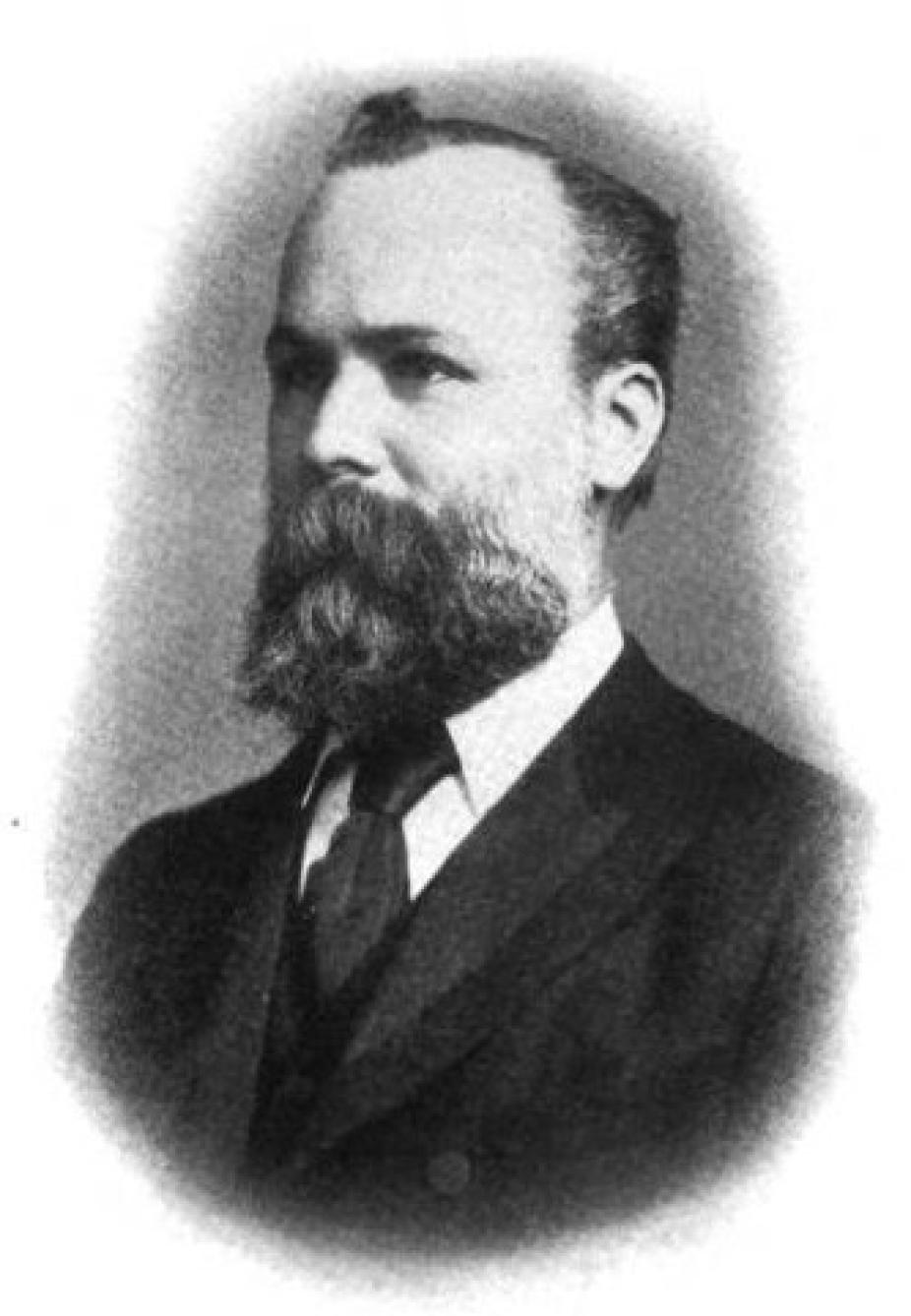Edward Walter Maunder (1851–1928)
Edward Walter Maunder was a British astronomer who devoted his academic career to the study of sunspots and the solar magnetic cycle. He is known for the discovery of a conspicuous solar calm that lasted from 1645 to 1715 that was named the Maunder Minimum. Born and raised in London, he attended University College and King's College, London.

Portrait of Edward Walter Maunder
In 1873 Edward was hired as a spectroscopic assistant at the Royal Observatory at Greenwich. The introduction of solar photography coincided with his appointment and he managed the department throughout his tenure. His solar work concentrated on three principles:
- A re-investigation of the Sun's axis based on Carrington's findings,
- Examining the motion of the spot-zones in the Sun's latitude during the 11-yr cycle, and
- Demonstrating the recurrence of magnetic storms following synodic rotation and their relation to disturbed regions of the Sun.
He married in 1875 and had six children. Following the death of his first wife in 1888, he met Annie Scott Dill Russell, a mathematician and astronomer educated at Girton College in Cambridge. Annie was his assistant at the Royal Observatory from 1890 to 1894. They were married in 1894.
Through observing, photographing and measuring sunspots, he discovered sunspot regularities over the course of an 11 year cycle. He and his assistant, Annie, closely collaborated on this project. In 1904, they unveiled their research in the form of the "butterfly" diagram.
Edward was very interested in the sunspot observations of another famous astronomer, Gustav Spörer. During the 1890's he used Spörer's research to find evidence of a period of low sunspot activity between 1645 and 1715. In 1894 he published a paper and presented his discovery to the Royal Astronomical Society. The period of low sunspot activity would be named the Maunder Minimum.
He took part in multiple eclipse expeditions traveling to places that included the West Indies, Lapland, India, Algiers, and Mauritius. He was invited by the Canadian government to attend the Labrador Solar eclipse of August 30, 1905.
Edward was instrumental in the foundation of the British Astronomical Association. His vision was to create an association that would be inclusive to any person, male or female, interested in astronomy.
Bibliography
Crommelin, A.C.D., 1928, Edward Walter Maunder, The Observatory • Provided by the NASA Astrophysics Data System, pages 157–159. (http://articles.adsabs.harvard.edu/pdf/1928Obs....51..157C)